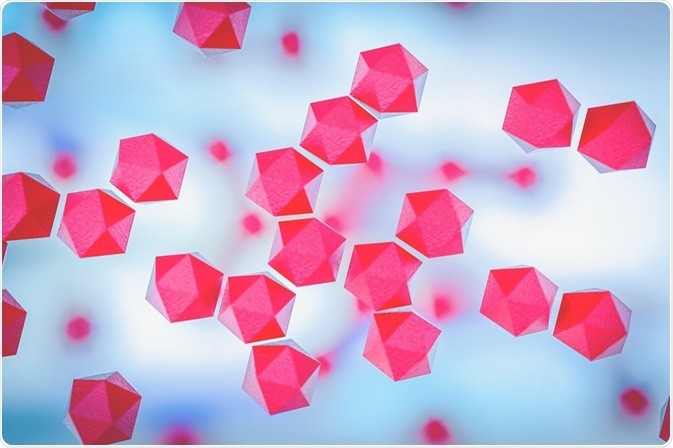Titanium nanoparticles are nano-sized particles (1-100 nm) made of titanium dioxide (TiO2). They are cheap to produce, and have applications in optics, materials science, electronics, catalysis, as a pigment, and in biology.
 Image Credit: CI Photos / Shutterstock
Image Credit: CI Photos / Shutterstock
Titanium nanoparticles in artificial joints
The serviceable life of artificial joints such as hips or knees, usually around fifteen years before replacement is required, can be greatly extended using titanium nanoparticles.
The nanoparticles are used to coat the artificial joint and provide a hard, resistant surface with improved resistance to wear. Similarly, other implants can be coated in this way to improve biocompatibility and lessen the risk of bacterial infections.
Photocatalytic Effect
Titanium nanoparticles kill bacteria when illuminated by ultra-violet (UV) light due to a photocatalytic effect.
Light is absorbed by the nanoparticle, which promotes an electron from the valance shell to the conduction band of TiO2. This generates an electron-hole in the valence shell, which can be filled by an electron from a nearby water molecule, leading to the generation of a hydroxyl radical.
Alternatively, the promoted lone electron in the conduction band can be passed to a nearby oxygen molecule, also ultimately producing a hydroxyl radical. Hydroxyl radicals created at the surface of the nanoparticle are deadly to surrounding cells.
The photocatalytic effect is also exploited in cancer treatment, where the nanoparticles are coated with targeting ligands allowing them to localise to a tumour and even enter cancer cells, where they are then exposed to UV light.
Sonoexcitation
UV light is not particularly penetrating through biological tissue, meaning that deep areas of the body cannot be illuminated. Additionally, UV light itself can be damaging to healthy tissue. Sonoexcitation is a technique that avoids this limitation using ultrasonic waves.
Exposure to ultrasound causes fluctuating pressure in a fluid that facilitates the creation and collapse of cavitation bubbles. Upon the collapse of these bubbles UV light is released, which can then go on to excite titanium nanoparticles and allow photocatalysis to take place.
Titanium nanoparticles in sunscreen
Titanium nanoparticles currently see commercial use in cosmetics and sunscreen to protect the wearer from the harmful effects of UV light, which is absorbed by the titanium nanoparticles.
The particles are often coated with silica or other non-toxic and stable layers that prevent or reduce occurrence of the photocatalytic effect.
Titanium nanoparticles in food and personal hygiene products
TiO2 is often found, at relatively high concentrations, in sweets and chewing gum products. Children often have a greater chance of exposure to titanium nanoparticles in food due as their consumption of sweet products is generally higher than that of adults.
Titanium nanoparticles are also found in personal hygiene products like deodorants, shampoos and toothpastes. The amount of TiO2 found in these products typically ranges from 1% to >10% by weight.
While approximately 36% of these titanium containing products are easily dispersed in water as stable colloids, their use is pervasive and continual disposal down common drains is a potential cause for concern for water treatment plants globally.
Safety of titanium nanoparticles
Some concerns regarding the safety of titanium nanoparticles exist. When applied to the skin they have been found to enter the deepest regions of the upper epidermal skin layer and collect within hair follicles.
Cells and DNA that are exposed to reactive oxygen species created via the photocatalytic effect are likely to become damaged.
The International Agency for Research on Cancer has classified titanium dioxide as possibly carcinogenic to humans, with primary concerns over the respiration of fine dust particles that have been shown to cause lung cancer.
Further studies regarding the safety of titanium nanoparticles are underway, with emphasis on the effect that size, shape, surface area, coating, and biological environment of the particle has on its physiochemical properties.
Additionally, the way in which the body metabolises and expels the nanoparticles requires a great deal of attention before they are fully utilised in a biological setting.
Further Reading